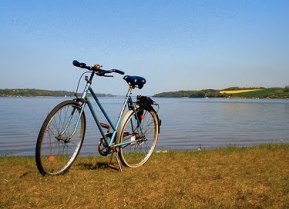Millions of people travel around the world each year whether for business or leisure. The World Tourism Organization (WTO) recorded a figure of 990 million tourist arrivals in 2011 or a growth of four percent. In the same year, international tourism generated US$1.2 trillion in export earnings.

Traveling can be fun and enriching but it’s also very important for people to take care of the environment whenever they go on short or long trips. Each one of us has to do his share in preserving the world we live in whether we’re just staying in one place or visiting other places. When we are able to do this, we accomplish many things that should give us a rewarding feeling.
What steps can you take then to ensure you travel the green way?
Booking electronic tickets is most ideal. This reduces paper waste and lessens the chances of you losing your ticket as you can always save it in your mobile phone or laptop.
When booking for your hotel accommodations and tours, find out if they have environment friendly certifications or are members of green industry associations. Certain organizations have come up with standards that keep track of the eco-friendly programs of hotels and tours. These include use of fluorescent lights, implementation of recycling and water
conservation programs as well as campaigns that encourage guests to buy only local organic foods. Hotels that meet these standards are considered green establishments.
Choose a hotel that’s near or accessible to public transportation. It would also be a good idea to stay at one close to places you want to visit. This will help you reduce your carbon footprint because you can just walk or take the public transport.
In the hotel you’re staying in, do make it a point to take part in their environmental program if they have one. Always turn off the lights, unplug appliances and lower the thermostat before you go out. Close the curtains as well if you’re in a warm place to keep the room cooler.
Join a walking or biking tour if possible. Apart from meeting new people, this will even allow you to do some exercise while you’re in a new place. And remember to walk or bike only in the designated areas to avoid affecting vegetation especially if you’re in a forested area.
Avoid buying items made from endangered species if you’re visiting Africa or Australia where much wildlife still exists. Make sure you ask about the materials used if possible.
Finally, leave the place you’re visiting untouched. Sometimes people are tempted to bring home shells, corals or flowers as souvenirs but authorities discourage this. The best way to keep memories of them is to take lots of pictures.
If you’re visiting Australia or other countries in the Asia Pacific region, many websites are available such as Expedia Australia to help you plan your travel.
Photos via planethopia.info and squidoo.com
Teresa is a freelance blogger, mom of two and a green advocate.
